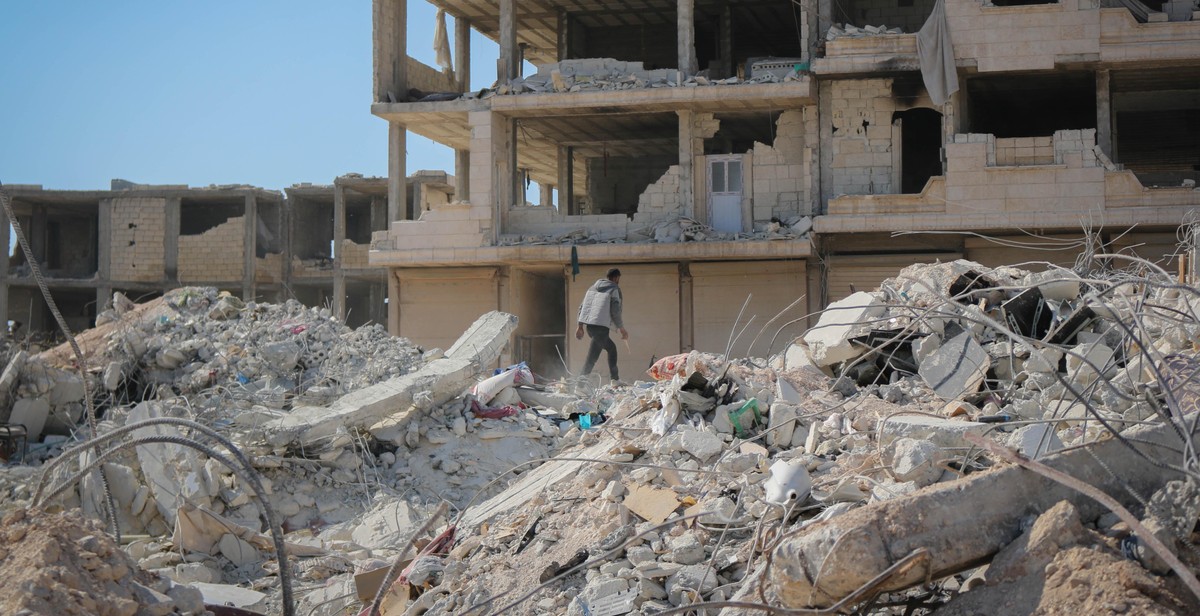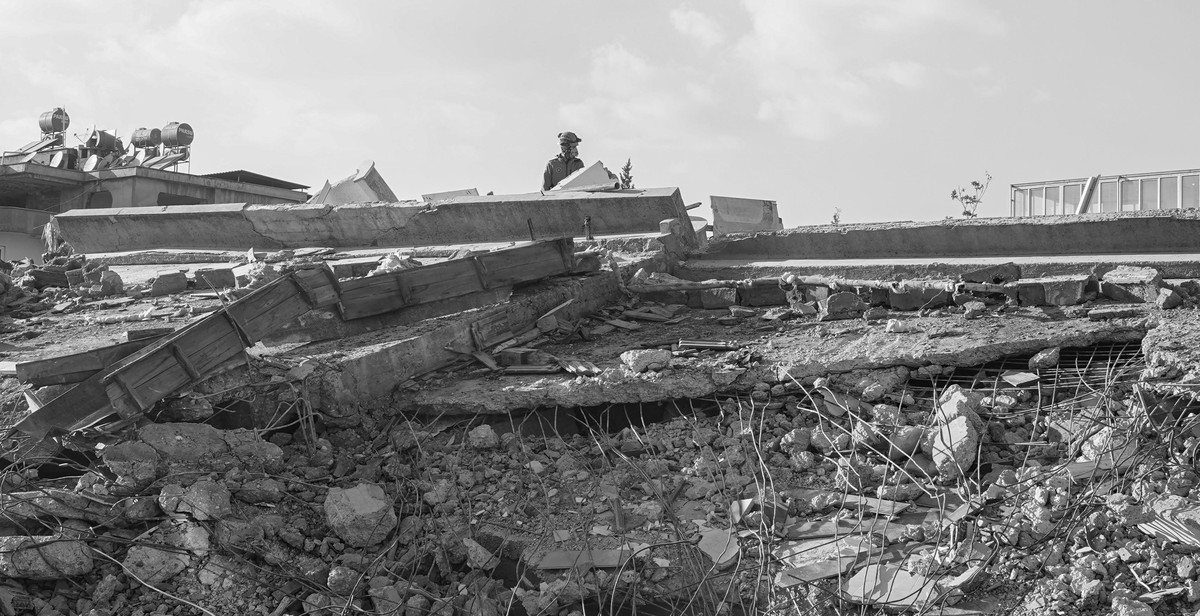How to Calculate Seismic Risk: Understanding the Probability of Earthquakes
Living in an earthquake-prone area can be a daunting experience. The fear of the unknown and the unpredictability of earthquakes can lead to anxiety and stress. However, understanding the probability of earthquakes and how to calculate seismic risk can help you prepare for potential disasters and minimize their impact.
What is Seismic Risk?
Seismic risk is the probability of an earthquake happening in a specific area and the potential damage it could cause. It takes into account factors such as the seismic activity in the region, the geological structure of the land, and the vulnerability of buildings and infrastructure.
Why is it Important to Calculate Seismic Risk?
Calculating seismic risk is crucial for disaster management and emergency planning. It helps governments and organizations determine the level of preparedness required in a specific area and allocate resources accordingly. It also helps individuals and businesses understand the potential risks and take necessary precautions to protect themselves and their assets.
How to Calculate Seismic Risk
Calculating seismic risk involves analyzing various factors such as historical seismic activity, geological characteristics of the region, and vulnerability of buildings and infrastructure. This information is used to determine the probability of an earthquake occurring and the potential damage it could cause. The result is a seismic hazard map, which is used to assess the risk in a specific area.
Understanding seismic risk and how to calculate it is essential for anyone living in an earthquake-prone area. By being prepared and taking necessary precautions, you can minimize the impact of a potential disaster and protect yourself and your loved ones.

What is Seismic Risk?
Seismic risk refers to the probability of damage or loss of life caused by an earthquake. It is the likelihood that an earthquake of a certain magnitude will occur in a specific area and cause damage to buildings, infrastructure, and people.
The severity of seismic risk is determined by a variety of factors, including the location of the earthquake, the magnitude of the earthquake, and the vulnerability of the buildings and infrastructure in the area.
Factors Contributing to Seismic Risk
There are several factors that contribute to seismic risk:
- Location: Areas that are located near fault lines or tectonic plate boundaries are at a higher risk of earthquakes. For example, California is located on the San Andreas Fault, which is a major source of seismic activity.
- Magnitude: The magnitude of an earthquake is a measure of the amount of energy released. The higher the magnitude, the more severe the earthquake and the greater the potential for damage.
- Building and Infrastructure Vulnerability: The vulnerability of buildings and infrastructure to earthquake damage is determined by their construction and design. Older buildings and structures that were not built to withstand earthquakes are at a higher risk of damage.
- Population Density: Areas with a higher population density are at a greater risk of earthquake damage and loss of life. This is because there are more people and buildings in the area that can be affected by the earthquake.
Conclusion
Understanding seismic risk is essential for assessing the potential impact of earthquakes on buildings, infrastructure, and people. By considering the location, magnitude, and vulnerability of buildings and infrastructure, it is possible to calculate the probability of seismic risk and take steps to mitigate its impact.

Understanding Earthquake Probability
Before we dive into calculating seismic risk, it’s essential to understand how earthquakes happen and how we measure their probability.
How Earthquakes Happen
Earthquakes are caused by the movement of tectonic plates. These plates make up the Earth’s crust and are constantly moving. When two plates rub against each other, they can get stuck, causing pressure to build up. When the pressure becomes too much, the plates suddenly slip, causing an earthquake.
The magnitude of an earthquake depends on how much pressure is released when the plates slip. The higher the pressure, the more significant the earthquake.
Measuring Earthquake Probability
Scientists use a variety of methods to measure earthquake probability. One of the most common methods is the seismic hazard analysis. This analysis looks at the history of earthquakes in a specific area and uses that data to predict the likelihood of future earthquakes.
The seismic hazard analysis takes into account a variety of factors, including the size and frequency of past earthquakes, the type of fault that caused the earthquakes, and the geological characteristics of the area. Using this data, scientists can create maps that show the probability of earthquakes in different regions.
Another way to measure earthquake probability is to use seismic monitoring. Seismometers are devices that measure the vibrations in the Earth’s crust. By tracking these vibrations, scientists can detect when an earthquake is happening and measure its magnitude.
Overall, understanding earthquake probability is crucial for calculating seismic risk. By knowing the likelihood of earthquakes in a specific area, we can take steps to prepare and mitigate the potential damage caused by these natural disasters.

Calculating Seismic Risk: Understanding the Probability of Earthquakes
Assessing seismic risk involves several key steps, including assessing vulnerability, estimating potential losses, and determining risk levels. By understanding these factors, you can better prepare for earthquakes and minimize the potential damage and losses they may cause.
Assessing Vulnerability
The first step in assessing seismic risk is to evaluate the vulnerability of buildings, infrastructure, and other assets in the area. This involves considering factors such as the age and construction quality of buildings, the location of critical infrastructure such as power plants and hospitals, and the potential impact of earthquakes on transportation networks and other essential services.
One useful tool for assessing vulnerability is the seismic hazard map, which shows the likelihood of earthquakes occurring in a given area.
Estimating Potential Losses
Once you have assessed the vulnerability of assets in the area, the next step is to estimate potential losses in the event of an earthquake. This includes both direct losses, such as damage to buildings and infrastructure, as well as indirect losses such as business interruption and lost productivity.
Estimating potential losses involves gathering data on the value of assets in the area, as well as the potential impact of earthquakes on these assets. This can be done using a range of tools and techniques, including risk modeling and scenario analysis.
Determining Risk Levels
Finally, once you have assessed vulnerability and estimated potential losses, you can determine risk levels for the area. This involves considering the likelihood of earthquakes occurring, as well as the potential impact of these earthquakes on assets in the area.
One common approach to determining risk levels is to use a risk matrix, which considers both the likelihood and impact of earthquakes on assets in the area. This can help you to prioritize resources and focus efforts on areas that are most at risk.
| Level of Likelihood | Level of Impact | Risk Level |
|---|---|---|
| Low | Low | Low |
| Low | Medium | Medium |
| Low | High | High |
| Medium | Low | Medium |
| Medium | Medium | High |
| Medium | High | Extreme |
| High | Low | High |
| High | Medium | Extreme |
| High | High | Extreme |
By following these steps, you can gain a better understanding of the likelihood and potential impact of earthquakes in a given area, and take steps to mitigate the risks and prepare for potential disasters.

Mitigating Seismic Risk
While earthquakes cannot be prevented, there are measures that can be taken to mitigate the seismic risk. These measures involve preparing for earthquakes, reducing losses, and recovering from earthquakes.
Preparing for Earthquakes
Preparing for earthquakes involves identifying potential hazards and taking appropriate measures to reduce their impact. This includes:
- Securing heavy furniture and appliances to prevent them from falling or tipping over during an earthquake
- Installing earthquake-resistant building materials and structures, such as reinforced concrete and steel
- Creating an emergency preparedness plan and practicing it with family members and coworkers
- Keeping an emergency kit with essential supplies, including food, water, medication, and first aid supplies
Reducing Losses
Reducing losses involves taking steps to minimize the damage caused by earthquakes. This includes:
- Securing building contents, such as shelves and cabinets, to prevent them from falling over and causing damage or injury
- Backing up important data and documents to prevent loss in the event of an earthquake
- Investing in earthquake insurance to cover the cost of damage and loss
- Conducting regular building inspections and maintenance to identify and address potential hazards
Recovering from Earthquakes
Recovering from earthquakes involves restoring normalcy after an earthquake has occurred. This includes:
- Assessing damage and determining the cost of repairs and replacement
- Working with insurance companies and contractors to repair and rebuild damaged structures
- Providing emotional support and counseling to those affected by the earthquake
- Developing long-term plans for earthquake preparedness and risk reduction
| Preparing for Earthquakes | Reducing Losses | Recovering from Earthquakes |
|---|---|---|
| Identify potential hazards | Minimize damage and loss | Assess damage and determine cost of repairs |
| Install earthquake-resistant building materials and structures | Invest in earthquake insurance | Repair and rebuild damaged structures |
| Create an emergency preparedness plan | Conduct regular building inspections and maintenance | Provide emotional support and counseling |
| Keep an emergency kit with essential supplies | Back up important data and documents | Develop long-term plans for earthquake preparedness and risk reduction |

Conclusion
Calculating seismic risk is a crucial step in preparing for earthquakes. By understanding the probability of earthquakes in a certain area, individuals and organizations can take necessary precautions to reduce potential damage and loss of life.
As discussed in this article, seismic risk is determined by analyzing various factors such as the location of faults, historical seismic activity, and the geological characteristics of the area. This information can be used to create hazard maps and develop building codes that can withstand seismic activity.
It’s important to note that even with advanced technology and planning, earthquakes can still cause significant damage and loss of life. However, by being proactive and taking steps to prepare, we can mitigate the impact of earthquakes and improve our chances of survival.
Tips for Reducing Seismic Risk:
- Secure heavy furniture and appliances to prevent them from falling during an earthquake
- Have an emergency kit with essential supplies such as food, water, and first aid kits
- Develop a family emergency plan and practice it regularly
- Stay informed about seismic activity in your area and follow any evacuation orders
Remember, preparation is key to reducing the impact of earthquakes. By understanding the probability of earthquakes in your area and taking necessary precautions, you can protect yourself and your loved ones from potential harm.
| Author: | John Doe |
| Date: | June 15, 2021 |
